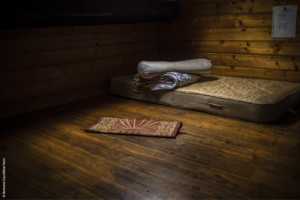All credits and legends : © Agnès Varraine-Leca/MSF
Four years of war, with more than 19,000 air strikes by the Saudi Arabia and United Arab Emirates-led coalition and conservative estimates suggest a human toll of 90,000. Civilians are paying a heavy price, the first victims of the coalition’s strikes as well as the ground battles between loyalist forces – loyal to President Hadi and supported by the coalition – and Ansar Allah’s troops. The latter are themselves responsible for heavy civilian casualties, especially due to their intensive use of landmines in the west of the country[1]For a better understanding of the causes and context of this conflict, see Francis Frison-Roche, “Yemen: a conflict behind closed doors”, Humanitarian Alternatives, n°4, March 2017, p.12-33, … Continue reading.
Agnès Varraine-Leca travelled to Yemen for Médecins Sans Frontières, three timesbetween March 2018 and May 2019. She recently documented the living conditions inside the city of Hodeidah, where a military operation started in June 2018, as well as the consequences of the bombings on civilians living in the Saada Governorate, in the north of the country, which has been most targeted by the coalition. In late December 2018, she also went to Mocha, in the Taiz Governorate, where landmines are wreaking havoc, maiming and killing children, and preventing families from cultivating their land. For a year and a half she has documented this war “behind closed doors”; a photographic work that will be published as a book in 2020.

Yemen, Saada Governorate, Haydan hospital, 20 April 2019
Patients wait their turn near the triage area in Haydan hospital. On 26 October 2015, the hospital was hit by a Saudi Arabia and United Arab Emirates-led coalition airstrike, partially destroying the facility. In February 2017, MSF teams returned to Haydan to start the gradual implementation of medical activities: maternity (March 2017), inpatient department (April 2017), referral to Saada hospitals (May 2017), outpatient department (December 2017). They finished the hospital’s reconstruction in April 2018. In 2018, nearly 14,000 emergency consultations and 3,800 antenatal consultations were conducted at the hospital. The same year, more than 1,500 patients were admitted to the inpatients department. Haydan is located in the Saada Governorate, which remains the governorate most targeted by international coalition airstrikes, according to the independent monitoring group Yemen Data Project (YDP).

Ayman is a barber originally from Ibb, south of Sa’dah city. In 2015, his house in Sa’dah was bombed by a Saudi and Emirati-led coalition airstrike. Twenty-eight members of his family died that day; only three survived including Ayman. He remembers the screams from the rubble, without being able to help them. At that time, he was studying IT. His brother, who owned a barber shop, died in the bombing. Thus Ayman stopped studying and started managing his family’s barber shop. This is the first time he has returned to the scene since 2015.

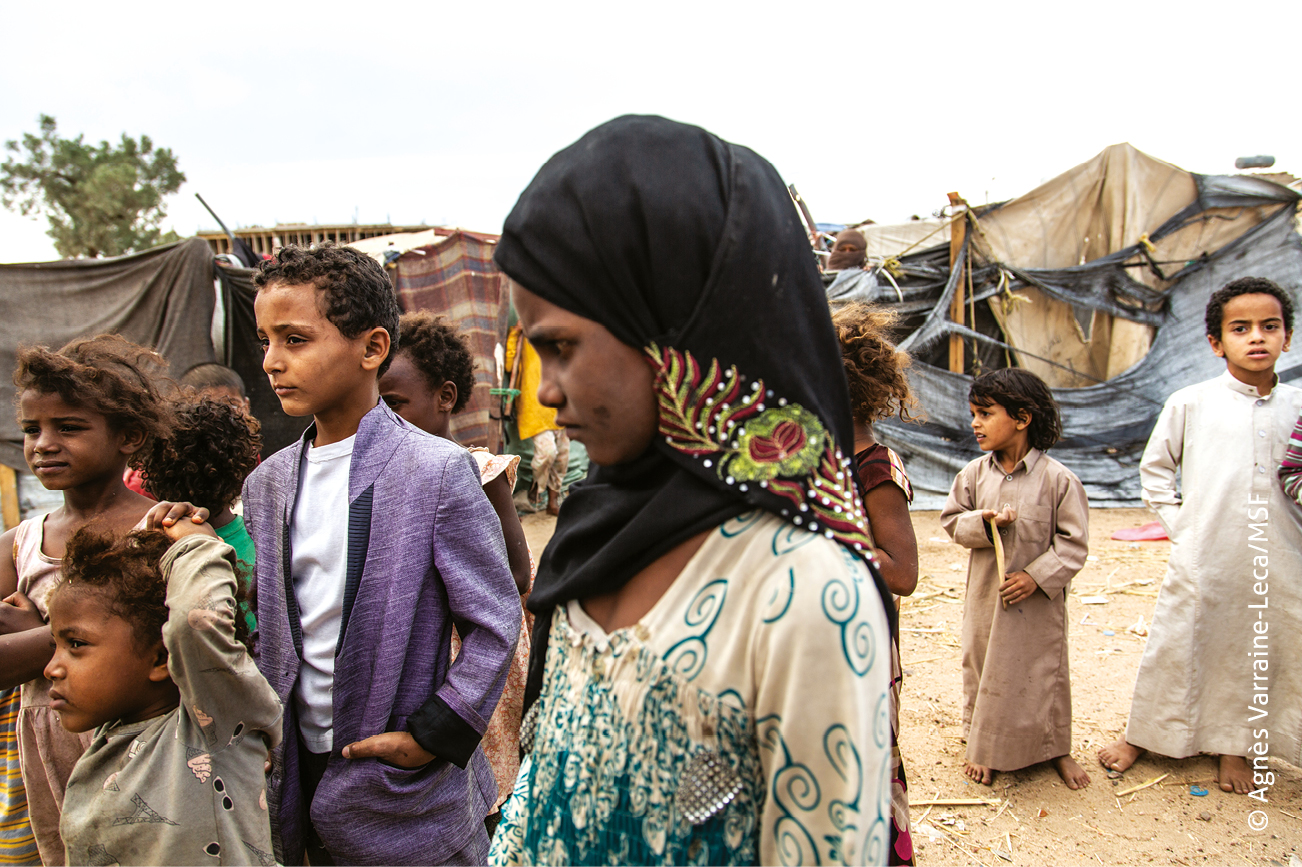
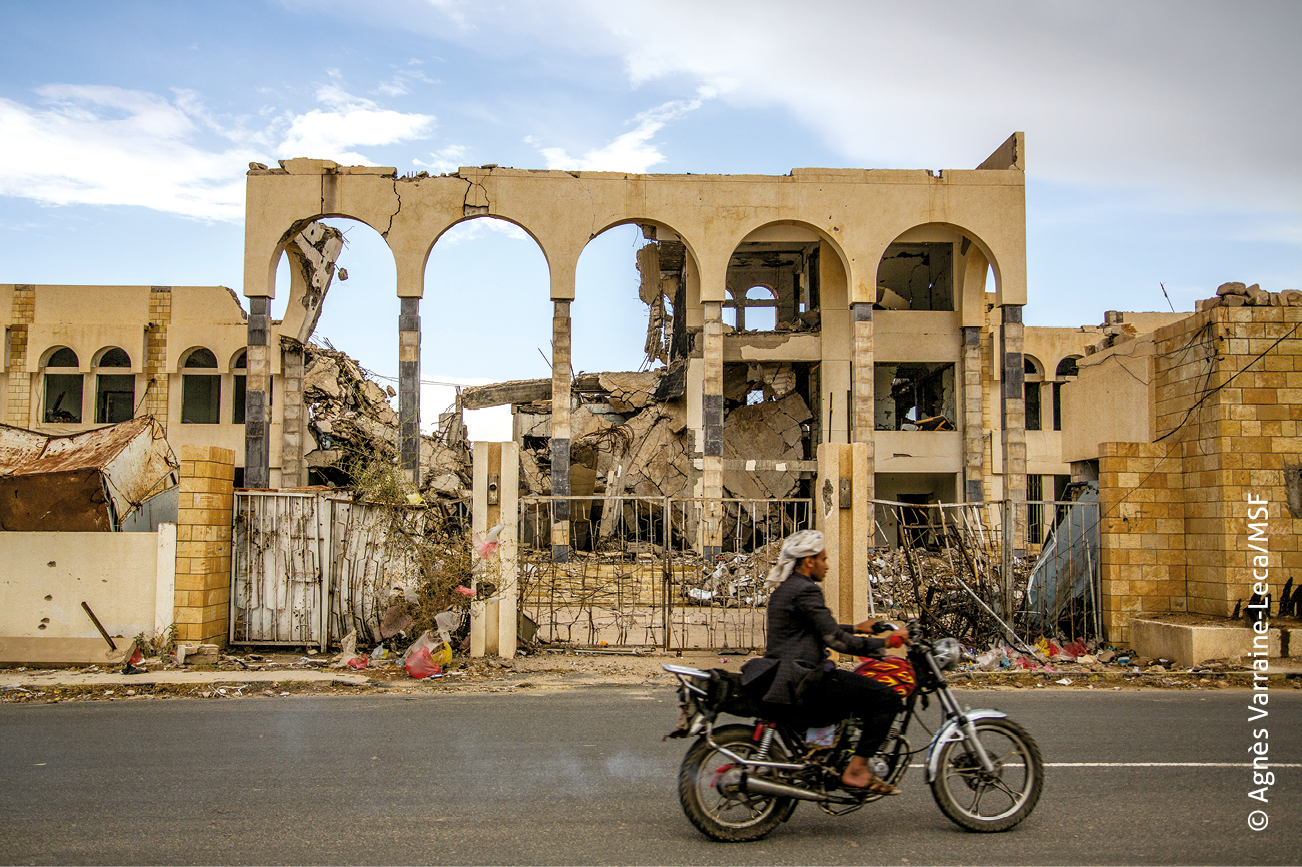
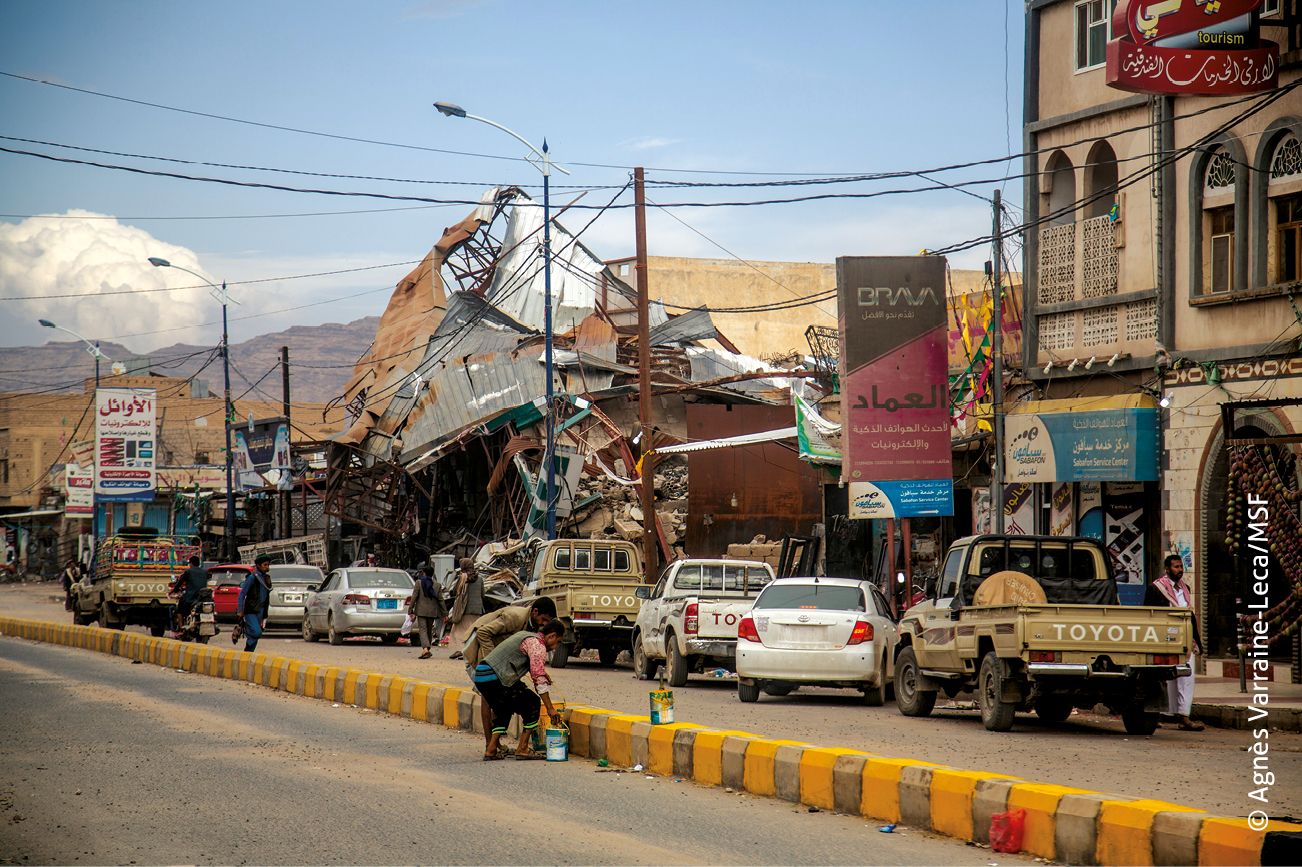
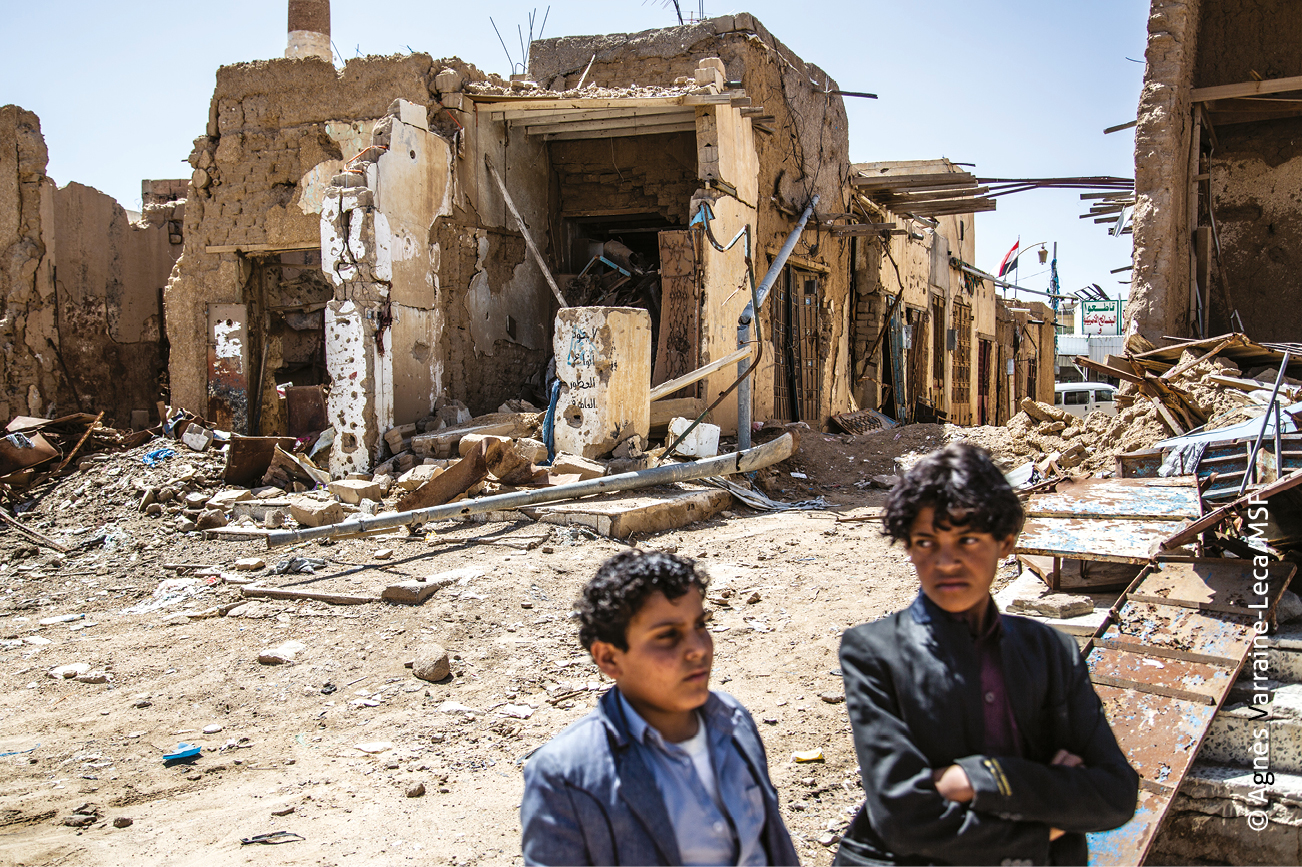
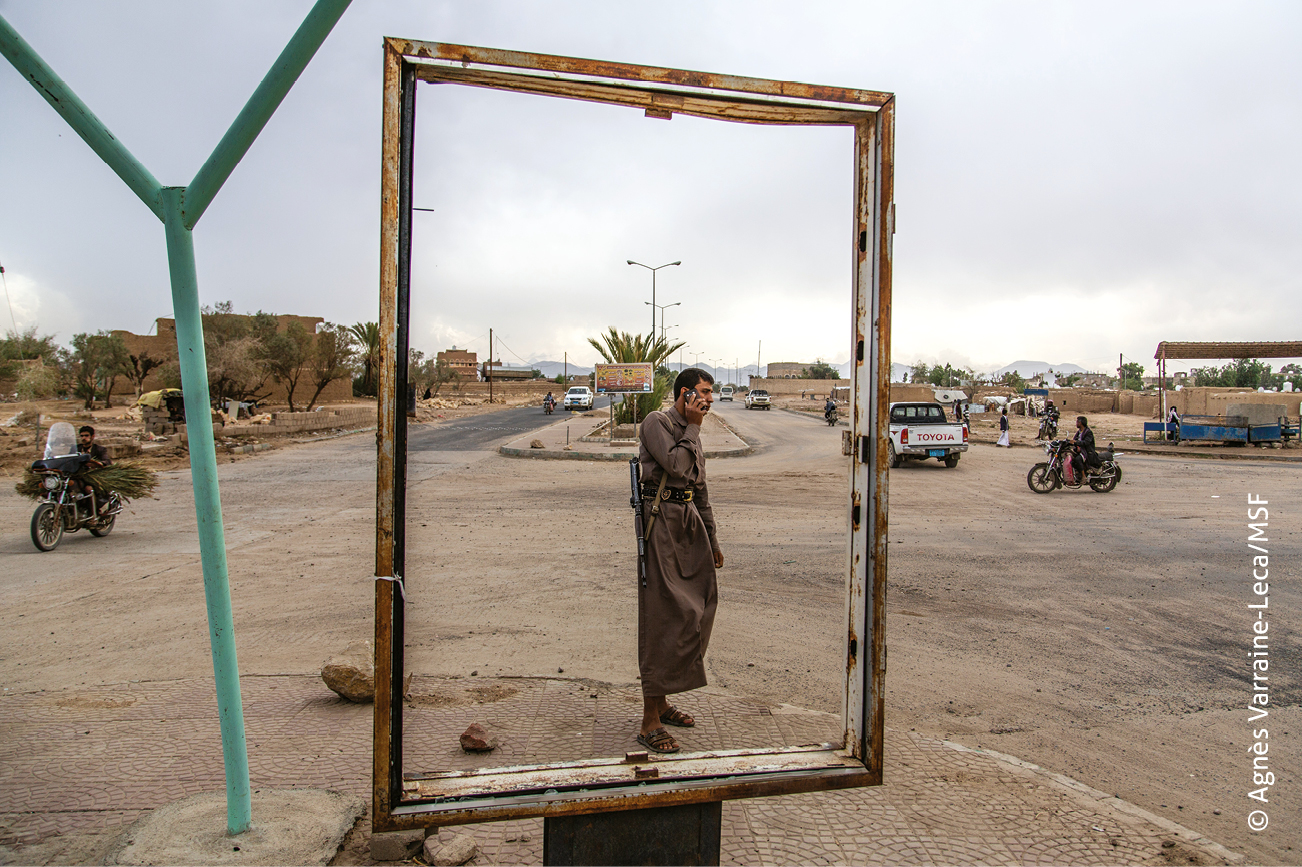

Daily life in Mocha (Yemen, December 2018)

Mawza is located in Taiz Governorate, 45 minutes to the east of the city of Mocha. It is a very poor rural area where people depend on their land to live. The area was taken from Ansar Allah’s control by forces loyal to President Hadi, backed by the Saudi and Emirati-led coalition in early 2018. The fighting damaged the fields and thus, the main livelihood of the 13,000 inhabitants of Mawza. When the military troops withdrew, thousands of antipersonnel mines and improvised explosive devices (IEDs) were planted in the area. Between August and December, MSF teams in Mocha received around 150 people injured by landmines or IEDs.
A third were children playing in the fields. Landmines and IEDs are defused by military forces. Local NGOs are responsible locating these devices.

On 7 December, Nasser was tending his sheep with his uncle and his cousin, they were planning to go to the mountains. Nasser stepped on a landmine in a field. He and his uncle were injured by the blast. His uncle got shrapnel in his eyes and was transferred to MSF’s surgical hospital in Mocha, and then to MSF’s trauma hospital in Aden. Nasser had multiple injuries, and his right foot was amputated as soon as he arrived at the hospital. “The bone was completely shattered so there was nothing left to save”, explains Farouk, physiotherapist. Nasser had previously had his thumb amputated because of a gunshot, which now makes it difficult for him to walk with crutches. Mohammed Abdou, Nasser’s father, explains that the fighting has intensified this year. As the military troops withdrew, they planted many landmines near Mafraq Al Mocha and in the area along the frontlines. MSF is supporting an advanced field hospital in Mafraq Al Mocha. The city’s residents know some of the places to avoid because there are landmines, but there are not enough signs to indicate the presence of landmines in the area or demining personnel. Mohammed Abdou is now afraid to go into the fields around Mafraq. The picture shows Nasser trying to walk with crutches for the first time, with the help of Farouk, his physiotherapist.

Amarah was injured by a landmine while playing near her home in Dubba, Mocha district (Taiz Governorate). On 1 December, she was with friends (three girls and a boy) in a sheep field close to Dubba, in the district of Mocha. Amarah saw an object with numbers: when she touched it, the landmine exploded. The explosion injured all four children, killing the boy. Fatma, her grandmother, heard the explosion and ran to the field. Amarah was evacuated on a mule. She was then transferred by car to Mocha military hospital (a one-hour drive), and then to MSF’s surgical hospital in the city. The family knows there are landmines in the area but their exact location is not signposted and many people have been injured, including Amarah’s uncle. Amarah suffered multiple injuries on the right side of her face, her abdomen and her right leg. She underwent several surgical interventions, including a laparotomy.

A child injured by a landmine in Mawza is examined by Elma Wong, anaesthetist, in the emergency room of MSF’s surgical hospital in Mocha. He was injured on 13 December with three other members of his family. Two of them arrived dead at the hospital. The child had shrapnel in his skull, arm and face.
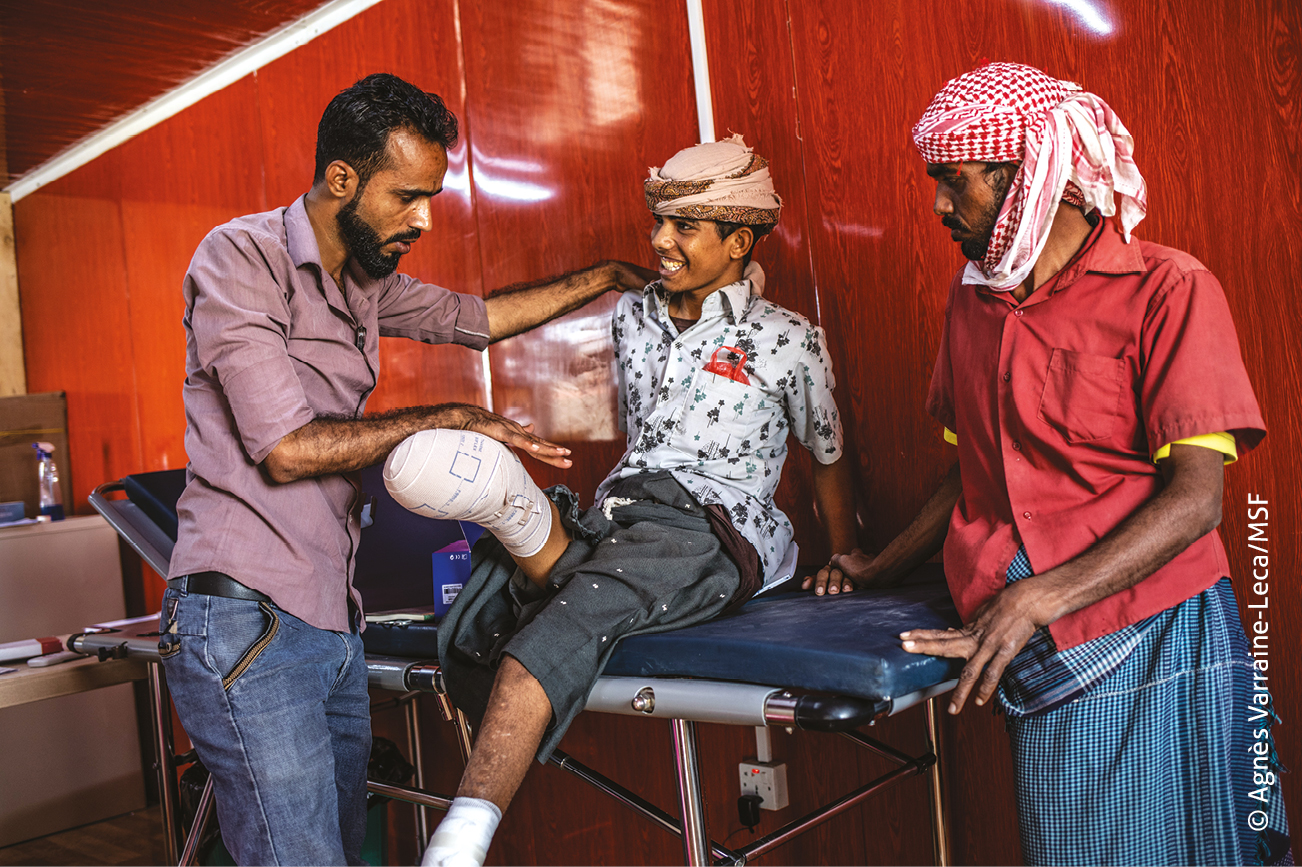
Ali (centre), 18, comes from a small village in a very poor, rural area near Mawza, 45 minutes from Mocha. Two months ago, he was supposed to meet three friends in a field near his house. As he was late, he started running, and suddenly a landmine exploded. Usually, he is very careful when walking in the field, because he knows landmines were planted in the area when the military forces withdrew a few months ago. There are no specific signs to indicate the presence of landmines. His left leg was amputated below the knee; it was already weak due to the polio he contracted as a child. Since the accident, he has been travelling to MSF’s hospital in Mocha twice a week for physiotherapy sessions with Farouk (left). From his village, the journey takes one and half hours.
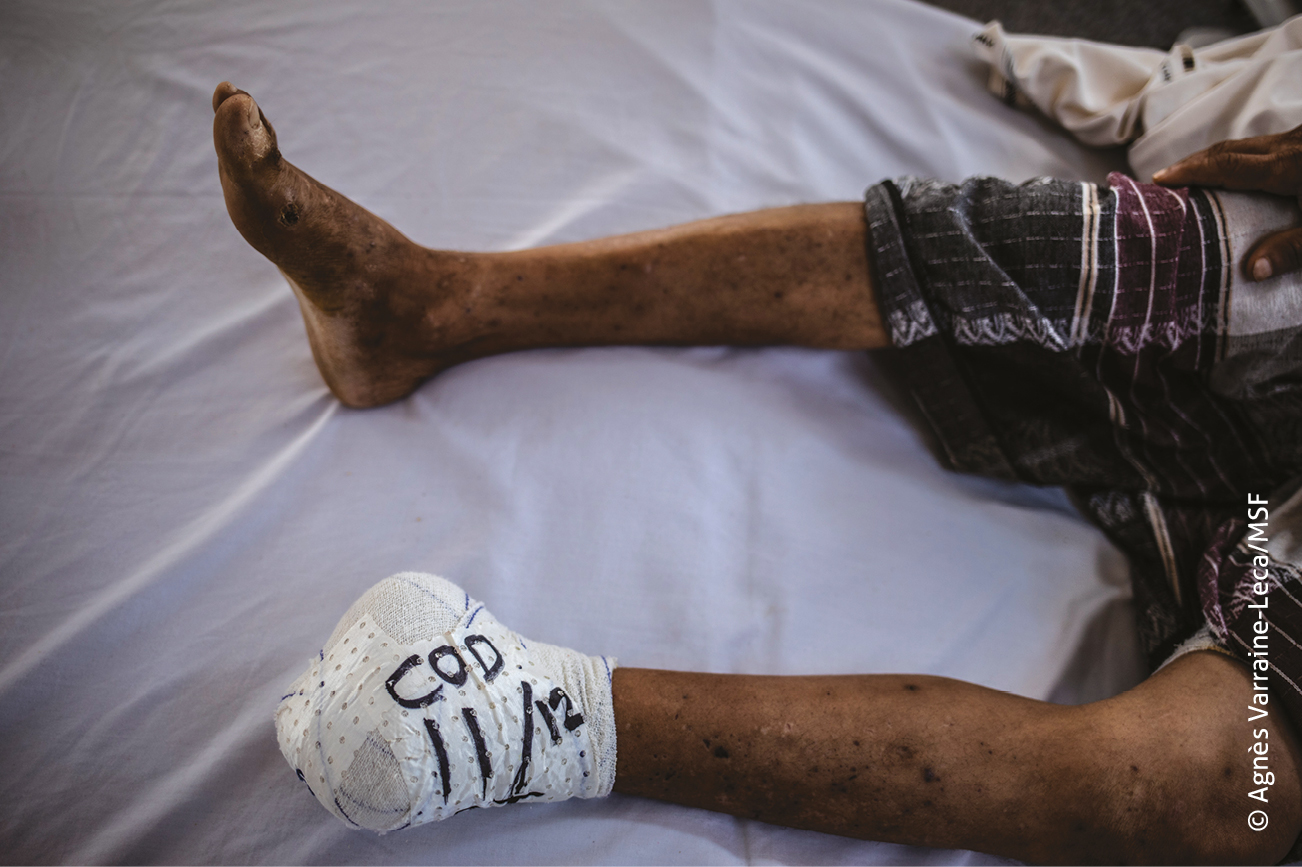
Ali Hassan, 40, is a driver and a former soldier. Father of two sons and two daughters, he has lived with his family in Hodeidah for 25 years. He was driving near Khawkha, 60 km from Mocha, when a rocket hit his vehicle, injuring six people and killing another. Ali has shrapnel in his face and abdomen and had his left foot amputated. “There is food in Hodeidah, but it’s very expensive. We have regular water shortages and no electricity. A lot of shops are closed inside the city.” Like many people he knows, Ali sent his wife and children to Sana’a for their safety. “Men are staying in Hodeidah to protect their houses. I am far away from my family but what can I do? It’s better for them to be a safer place. The war has changed everything.”

ISBN of the article (HTML): 978-2-37704-564-8


